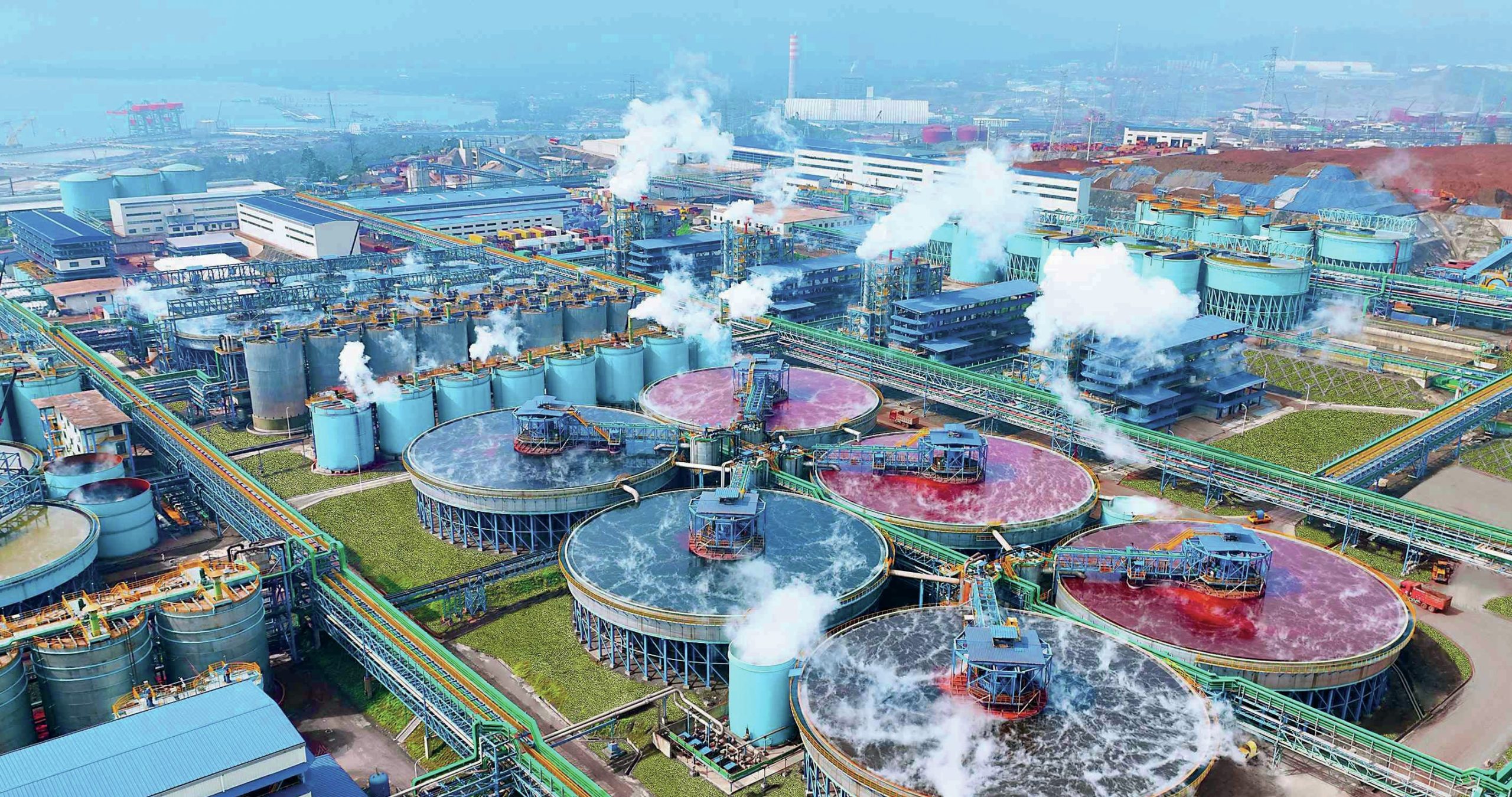Nitrogen+Syngas 389 May-Jun 2024

31 May 2024
Chinese urea exports
UREA MARKETS
Chinese urea exports
Although it has been a major exporter of urea, increasing Chinese government restrictions have restricted the seasonal window for exports.

China is the world’s largest producer and consumer of urea. In 2023 it consumed 26.7 million tonnes N of urea (58.7 million t/a product), around one third of all urea consumed worldwide. A focus on self-sufficiency led to over-building of urea capacity during the 1990s and 2000s, leaving China with a large overhang of surplus capacity which it tended to seek export markets for. In 2015, for example, the peak year, China exported 13.7 million tonnes of urea.
However, the Chinese government began measures from 2015 to tackle this, with new more stringent environmental regulations forcing the closure of smaller and less efficient plants, especially those operating on more expensive anthracite coal, and encouraging the construction of new, larger facilities able to take advantage of economies of scale, generally based on cheaper, lower grade bituminous coal. There had also been a number of gas-fed ammonia-urea plants built in the 1990s, but China’s chronic shortage of natural gas for power production means that these plants often suffer from gas supply curtailments, especially during winter. Chinese urea production peaked at 70.8 million t/a in 2015, and thereafter fell quite rapidly, to just 51.9 million t/a in 2018, and only recovering slowly to 62.9 million t/a in 2023 (see Table 1).

At the same time, there were also efforts to cap Chinese fertilizer use and make sure that nutrients were applied more efficiently to fields. Chinese urea consumption fell from 57 million t/a in 2015 to 49 million t/a in 2018, although since then there has been a creeping increase to the present 58.7 million t/a. All of this served to precipitately reduce Chinese urea exports from 13.7 million t/a in 23015 to just 2.4 million t/a in 2018, and while this rebounded to around a 5 million t/a surplus in 2019-2021, the Chinese government imposed export controls in 2021 which it has not relaxed since. Chinese urea exports dropped to 2.8 million t/a in 2022, recovering somewhat to 4.3 million t/a in 2023.
Export restrictions
China has subsidised urea prices to end users to keep prices reasonable for farmers. However, this has often meant that at times of high international urea prices it becomes more profitable for domestic producers to sell their product on the international market. This tended to exacerbate periods of higher domestic pricing, and so in order to keep domestic supply plentiful, China has long maintained restrictions on urea exports. In the 2010s this was achieved by a quota system which restricted exports to certain months of the year when domestic demand was low in order to try and keep domestic production at home at times of high international prices. However, in July 2021, China began asking major urea and ammonium phosphate producers to stop selling abroad. Three urea producers in Shanxi, Hebei and Shandong were asked by the government to suspend applications for China Inspection and Quarantine Certificates. This was followed up in October 2021 by announcement that China would be carrying out “inspections on import and export chemical fertilizers strictly under the latest regulations,” according to a notice from the National Development and Reform Commission (NDRC). The effect was to limit or even suspend exports of some fertilizers, especially phosphates, to ensure domestic supply. The export restrictions have continued into 2022 and 2023 and have had a marked effect on urea exports and international pricing. Restrictions were lifted in March 2023, but reimposed towards the end of the year. A complete pause in export permits from January 2024 has meant that Chinese urea exports effectively ceased, with Q1 exports down to just 25,000 tonnes – a 95% drop year on year – and it has been unclear when they will be relaxed, leading to considerable uncertainty among traders and buyers. Producers/traders were finally allowed to apply for export inspections from 15 March 2024, with an average approval time of 40 working days or effectively 2 months. Applications submitted after 1 May will have an approval time of ten working days. Hence, significant exports are expected to resume only after 15 May 2024. However, the risk around resumption of exports continues to exist as the customs office refused inspections after 15 March.
The uncertainty among buyers has led to some major importers seeking supplies from elsewhere. India, which bought 1.9 million tonnes of Chinese urea in 2023, has been switching away to purchases from Russia, Oman, and Abu Dhabi. Malaysian buyers have likewise been seeking supply from Vietnam and Egypt, and South Korea has likewise been buying from Vietnam instead.
Overall, CRU expects that 2024 exports are forecast to stay at 4.3 million t/a, but the government is likely to raise export barriers if domestic prices become too high (above $360/t).
Domestic demand
Although agriculture demand for urea is expected to increase to 41.2 million t/a in 2024, up from 39.2 million t/a in 2023, due to increased planted area and the application of high-density planting technology, over the, the growth rate for agriculture is likely to continue to be slightly negative due to the promotion of increased fertilizer efficiency. However, the increase in technical demand is likely to largely offset the decline in ag demand. Urea demand for the resin and wood-based panel industry is expected to grow at a CAGR of 4.5% over the period 2023–28, to reach 12 million t/a in 2028, due to the rise in the standard of living. The substitution of ammonia with urea in thermal power plants for selective catalytic reduction of NOx emissions which began in August 2020 is also likely to increase urea demand in this sector from 2.4 million t/a in 2023 to 3.0 million t/a in 2024. Overall demand will nevertheless continue its long slow decline, to 56.1 million t/a in 2028.
Coal prices
Feedstock pricing and availability has been a major issue for Chinese producers. Around 20-25% of Chinese urea capacity uses natural gas as a feedstock, which is virtually unavailable during winter because it is required for power generation. Over the past decade coal prices have been rising, eroding margins, and coal has occasionally not been available at any price. Government targets for Chinese states to reduce CO2 emissions means that some state governments such as Inner Mongolia and Shanxi are also forcing local urea plants to run at lower rates or not at all.
Nevertheless, increasing use of renewable power and rationalisation in the coal industry is gradually changing the situation. Bituminous coal prices have remained relatively flat at $130133/t since November 2023, actually reducing the average bituminous-based urea site costs to $202/t, compared to $265/t for September 2022. The thermal coal market was in slight oversupply in 2023, due to strong domestic production, driven by considerations of national energy security and expectations tied to economic recovery. Additionally, there was a record level of seaborne imports following China’s decision to lift its ban on Australian coal imports. Port coal stocks achieved record highs through 2023, reaching 26 million tonnes by December 2023, supported by strong coal production, weaker-than-expected economic growth, and stable summer weather. In 2024, market rebalancing is expected as the government balances between the interests of coal mining industry and coal-fired power companies, thereby leading to an average of $124/t.
As a result, domestic urea production is expected to increase by 4 million t/a to reach 66.8 million t/a in 2024 on the back of new capacity additions (net additions of 2.7 million t/a) and improved utilisation rates. Overall, following a steady decline in 2016 –21, net capacity is expected to increase by 5.9 million t/a in 2024 –28, bringing total capacity to 76 million t/a in 2028, the highest since 2018. Most new capacity is based on bituminous coal-based, while closures continue to be predominantly among anthracite-based producers. The share of bituminous-based capacity is expected to rise from 50% in 2023 to 55% in 2028. This implies lower production costs, owing to the lower price for bituminous coal than anthracite.
Urea prices
Price remains the most important factor which could trigger tighter export restrictions.
The government is likely to raise export barriers if domestic prices become too high, especially during or before peak season. The threshold is expected to be above RMB2,300-2,600 ex-works ($320360/t) for urea. At time of writing, urea prices were assessed at RMB2,1002,180/t ex-works ($290-301/t) in northern China, with the high end of the range nearing the anticipated threshold. This may be the reason for an apparent about turn on export licenses during April-May. China asked some fertilizer producers to suspend urea exports after domestic prices jumped. Urea futures on the Zhengzhou Commodity Exchange surged almost 50% over a seven-week period from mid-June to the end of July, but have fluctuated since.
CRU expects inland prices will not meet what is deemed a comfortable range by the Chinese government in the coming weeks. This means that, given demand for the spring application season and purchases for summer corn applications, no significant trade volumes are likely to emerge from China before July. The government’s focus on ensuring domestic availability is expected to keep the exports range in terms of tonnage between 4.6–4.8 million t/a in 2025-27. Restrictions could be lifted from about 2028, as new capacity comes onstream, prices stabilise at a lower level, and the Chinese government develops confidence in availability and domestic prices are reasonable.






